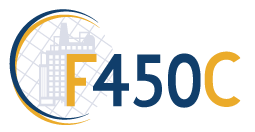The blockchain data platform Chainalysis, best known for its work with law enforcement agencies to track criminals on the dark web, is adding support for the Lightning Network (LN), along with other major networks including Bitcoin Cash and Ethereum.
The US startup aims to bring its forensic tools to less public blockchains by opening up their APIs and offering subscription access via a new developer kit called Metacert Protocol.
“Chainalysis is now the only blockchain analysis provider with a dedicated developer kit to support the Ethereum, Bitcoin Cash, and Lightning Networks. This will give developers the ability to build applications on top of these networks and improve the user experience by reducing confirmation times and transaction fees,” said Chainalysis CEO Michael Gronager in a statement.
The LN is a proposed solution to the bitcoin’s scalability problem, which limits the number of transactions that can be processed on the network at any one time. By moving transactions off-chain and into payment channels between two or more parties, LN supporters hope to increase capacity without compromising security or decentralization.
So far, adoption of the LN has been slow due to a lack of wallets and lack of awareness, but it has been steadily catching on thanks to a number of popular apps. French startup ACINQ released the beta version of its Lightning-enabled eclair wallet for Android just last week.
Chainalysis’ move underscores a larger trend in cryptocurrency companies becoming more LN-friendly. Most recently, hardware wallet manufacturer Trezor announced it will be adding full support for LN within its latest software update in August or September this year. The company said in a tweet: “Our engineers are making good progress implementing Lightning Network into Trezor.”
Coupled with this development is an announcement from Blockstream earlier this month that its “Thunder Network” live testing environment is now fully up and running. Designed to allow large volumes of low-value bitcoin transactions to take place without fees, Thunder is a foundation for the LN and will be compatible with many wallets and other applications.
The Chainalysis API comes as part of an ecosystem called Metacert Protocol, which also offers data on how cryptocurrency tokens are used across different applications and blockchains. The idea is to offer this service in an automated fashion using machine learning tools, making it accessible to startups building consumer products.
Former Google head of security and privacy engineering Gerhard Eschelbeck told CoinDesk: “Chainalysis does not sell its services to clients directly; rather they license their software via developers that integrate Chainalysis into their application or business platform.”
“This strategy differentiates them from other players in the blockchain analysis space, and addresses a wider audience … Their tools can be used to detect whether funds received from an address are associated with illegal activities; or when specific transactions do not follow patterns established by established players in the market,” he added.
Speaking on Chainalysis’ move into bitcoin cash and ethereum, Gronager said: “We believe that there is demand for this type of data beyond what we currently provide in our limited product set.”
“By providing APIs we open up access so anyone using these networks will have access to the same level of tools and information as our existing customers.”
Showdown – bitcoin lightning network vs nano network
The Lightning Network is designed to solve the scaling issues that are plaguing Bitcoin. It works by creating a second layer on top of the blockchain, which allows transactions to take place instantly with near zero fees. For example if you want to make 100 payments on the Lightning Network for 10 Satoshis each, instead of paying 100 * 10 = 1000 Satoshis in transaction fees, you would only need to pay around 40 Satoshis worth of fees because all your payments are happening off-chain. Every bitcoin wallet will have its own lightning node , which will be responsible for routing other user’s payment requests through the network. There are already multiple implementations that are being worked on at this point, both by startups and individual developers. For example, ACINQ , MIT and Lightning Labs are working on their own implementations. The first production release of the lightning network is scheduled for January 2018 .
The Nano network uses a different approach to solve the same issues. Instead of creating an entirely new layer on top of the blockchain, it re-uses bitcoin’s existing ledger. When you make transactions over the nano network, every account holder will act as a “personal blockchain” node, which means they can set up their own nodes without any huge hardware investments or incredibly high transaction fees. The cost of setting up your ‘node’ is just the price of one XRB (Nano currency). If you want to send someone 1 XRB through this network, that 1 XRB simply gets sent from your account to the recipient’s account. There is no need for an intermediary or third party to facilitate the transaction. The Nano network is already live and has been operational since March 2017 .
Whichever solution ends up winning out, it’s clear that there is a huge demand for better scaling solutions in the Bitcoin and cryptocurrency space. The Lightning Network and Nano networks are both worth keeping an eye on as they develop!
***
The Lightning Network is a proposed second layer on top of the blockchain that would allow instant transactions with near zero fees. It is designed to solve the scaling issues that are plaguing Bitcoin.

